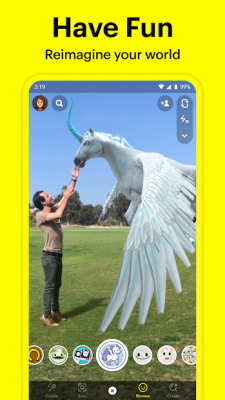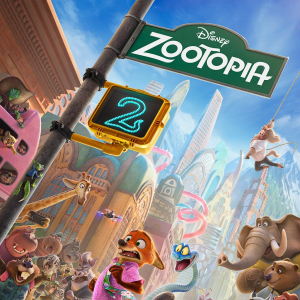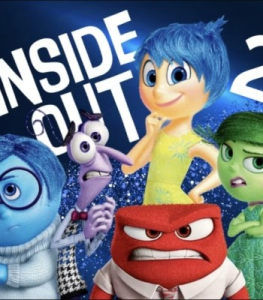Snapchat is a mobile app that allows users to share a photo or video of themselves that will then disappear after 10 seconds, in addition to being able to send text messages and chat. Snapchat was created in September 2011 by Reggie Brown, Bobby Murphy, and Evan Spiegel, who wanted to create an app that would allow people to share photos that would disappear. Snapchat is a video and photo messaging application that is primarily designed for iPhone and Android devices. It was created by Stanford University students Evan Spiegel, Bobby Murphy, and Reggie Brown, and has been officially launched on September 24th, 2011. The name "Snapchat" was based on the idea of "sharing photos that disappear after a short amount of time".
Features Review
Features
One of the most important features of Snapchat is that photos shared through the app are supposed to "disappear" after a certain amount of time. This means that the app ensures the photos will not be saved in the phone's library or on the server. This is what gives Snapchat a lot of its appeal, as users of the app can share photos and videos with each other without worrying that others will be able to see them.
Design
The design of the app is based on the idea of having a single photo or video being the focal point, with the other content being at the bottom of the screen. The idea for the design came from Evan Spiegel's childhood, as he had a fear of missing out on the most important moments in life.
Usability
Snapchat is a simple and easy to use app that has been designed for teenagers and adults aged 18 and over. The app is designed to be quick and easy to use, and it is very intuitive as it does not require a lot of effort to figure out how to use it.
Pros
- The photos shared on Snapchat can only last for up to 10 seconds;
- Sharing photos on Snapchat is instantaneous;
- The app is designed for kids in mind, so it does not have a lot of things that would be considered to be "adult content". This means that it is safe for children;
- The app is designed to only be accessed with permission, which means that the chances of a child accidentally walking into something that they are not supposed to see are very low;
- The app is designed to be very quick and simple, so it does not require a lot of time to learn;
- Snapchat is designed to be very easy to use, which is perfect for people who are not that tech savvy;
Cons
- Sharing photos on Snapchat is instantaneous, which means that there is no way for someone to review the photo before sending it;
- The app is designed to be very quick and simple, so it does not require a lot of time to learn;
- All photos shared are in the format of photos or videos, which means that the amount of storage taken up by the app is very low;
Conclusion
Snapchat is a mobile app that allows users to share a photo or video of themselves that will then disappear after 10 seconds, in addition to being able to send text messages and chat. Snapchat was created in September 2011 by Reggie Brown, Bobby Murphy, and Evan Spiegel, who wanted to create an app that would allow people to share photos that would disappear. The idea behind Snapchat was the idea that it would allow people to share photos that would disappear after a certain amount of time, in an attempt to allow people to share more personal things with each other.








Subscribe to get more
- App history log
- App popularity
- App comparancy
- Sales alert
Popular Apps
Blog
-
![Celestial Geomancy: The Rise of Teyvat's Enigmatic 5-Star Geo Warrior]() Top Apps
Celestial Geomancy: The Rise of Teyvat's Enigmatic 5-Star Geo Warrior
In the realm of Teyvat, whispers of an enigmatic 5-star Geo warrior have stirred excitement among adventurers. The mysterious character, renowned for her elegant combat style and intricate abilities, is said to make her debut in an upcoming version. Enthusiasts have eagerly gathered every shred of l...
Read more
Top Apps
Celestial Geomancy: The Rise of Teyvat's Enigmatic 5-Star Geo Warrior
In the realm of Teyvat, whispers of an enigmatic 5-star Geo warrior have stirred excitement among adventurers. The mysterious character, renowned for her elegant combat style and intricate abilities, is said to make her debut in an upcoming version. Enthusiasts have eagerly gathered every shred of l...
Read more
-
![Between Worlds: Unraveling the Puzzle of Memory and Mystery]() News
Between Worlds: Unraveling the Puzzle of Memory and Mystery
This article introduces an innovative puzzle title that intertwines dreamlike atmospheres with tangible reality. It invites players into a world where observation and memory combine to create a richly immersive challenge.
During a recent developers’ showcase, a host of remarkable indie projects wer...
Read more
News
Between Worlds: Unraveling the Puzzle of Memory and Mystery
This article introduces an innovative puzzle title that intertwines dreamlike atmospheres with tangible reality. It invites players into a world where observation and memory combine to create a richly immersive challenge.
During a recent developers’ showcase, a host of remarkable indie projects wer...
Read more
-
![Xbox's 25-Year Journey: Celebrating the Past and Pioneering the Future]() News
Xbox's 25-Year Journey: Celebrating the Past and Pioneering the Future
Microsoft is preparing a momentous announcement concerning the future of its gaming ecosystem, set to take place in 2026. With the upcoming 25th anniversary of Xbox next year, the company is reflecting on its legacy and simultaneously planning innovative steps forward. The celebration will be multif...
Read more
News
Xbox's 25-Year Journey: Celebrating the Past and Pioneering the Future
Microsoft is preparing a momentous announcement concerning the future of its gaming ecosystem, set to take place in 2026. With the upcoming 25th anniversary of Xbox next year, the company is reflecting on its legacy and simultaneously planning innovative steps forward. The celebration will be multif...
Read more



































